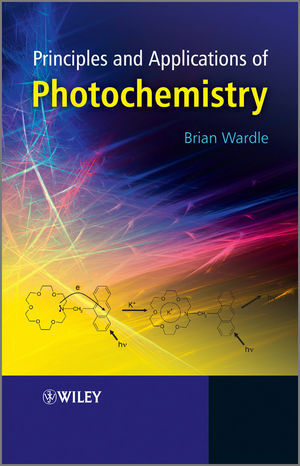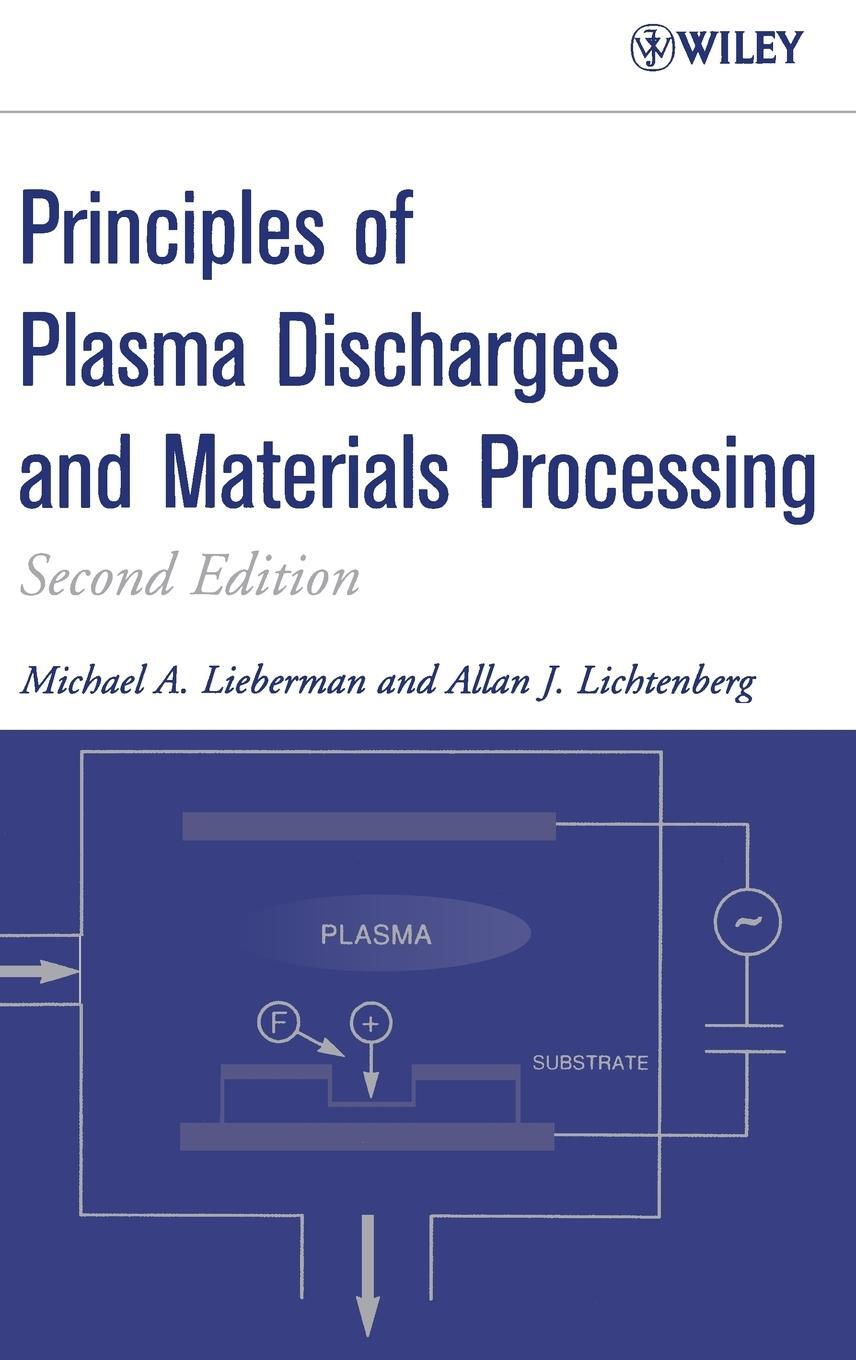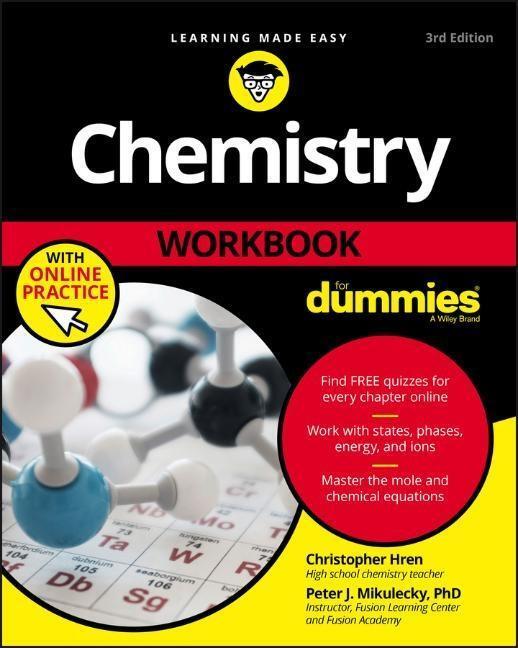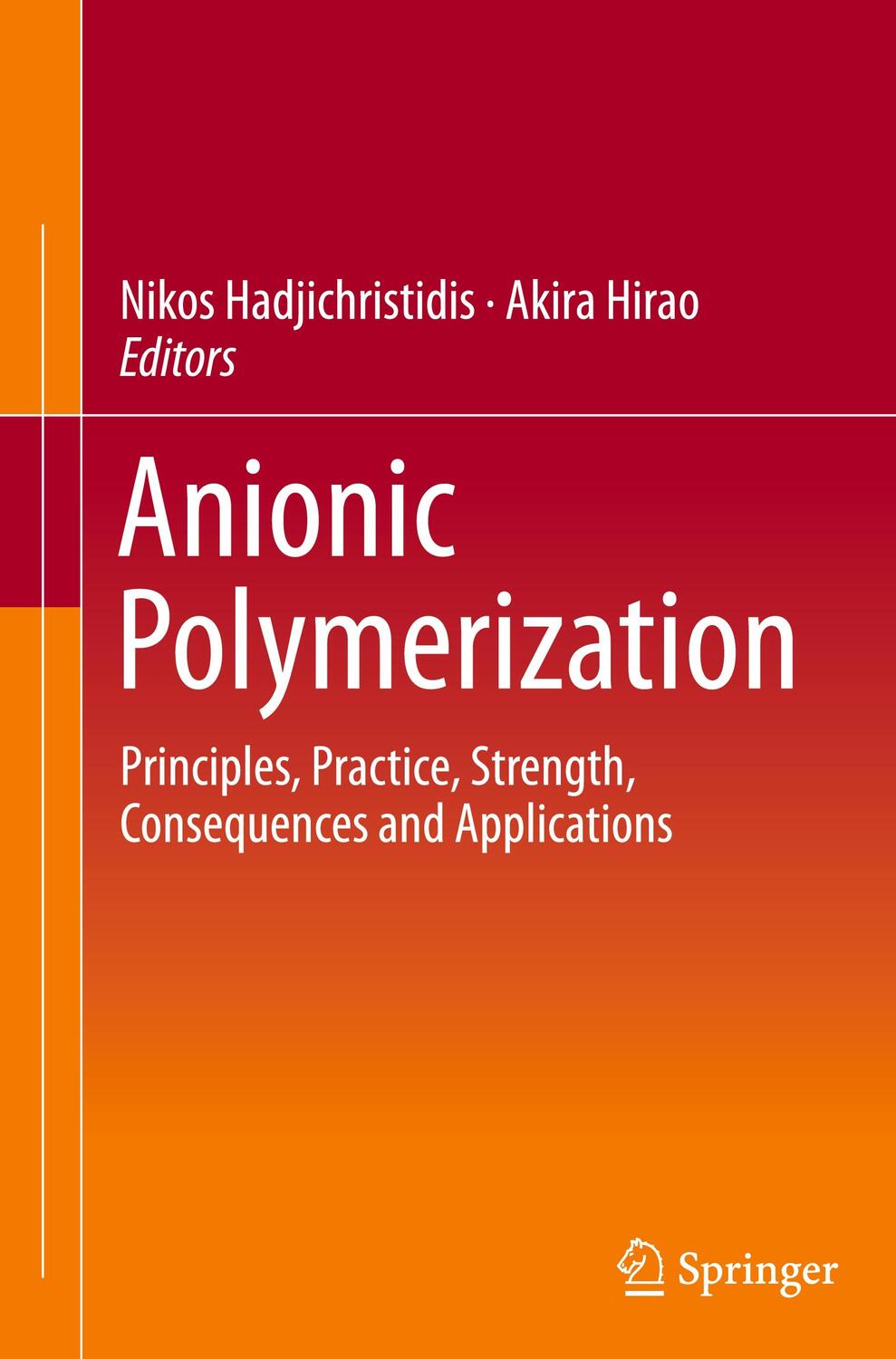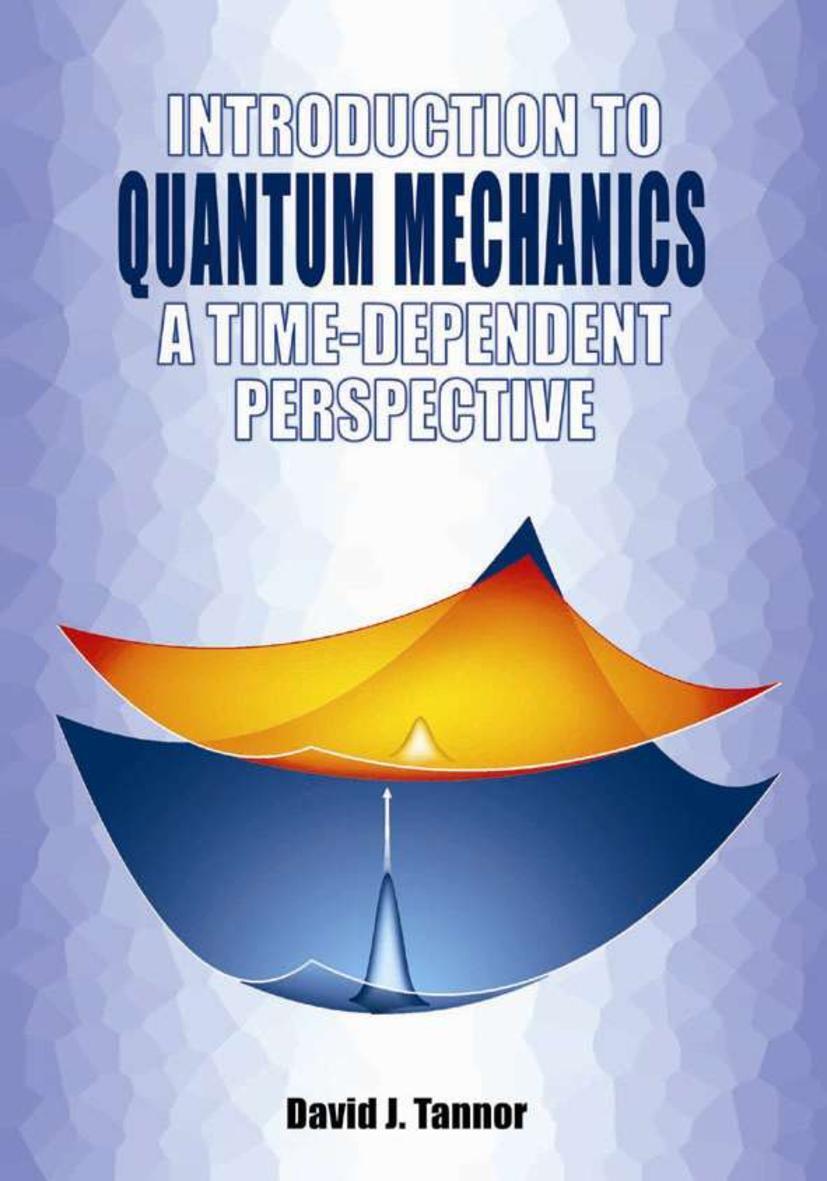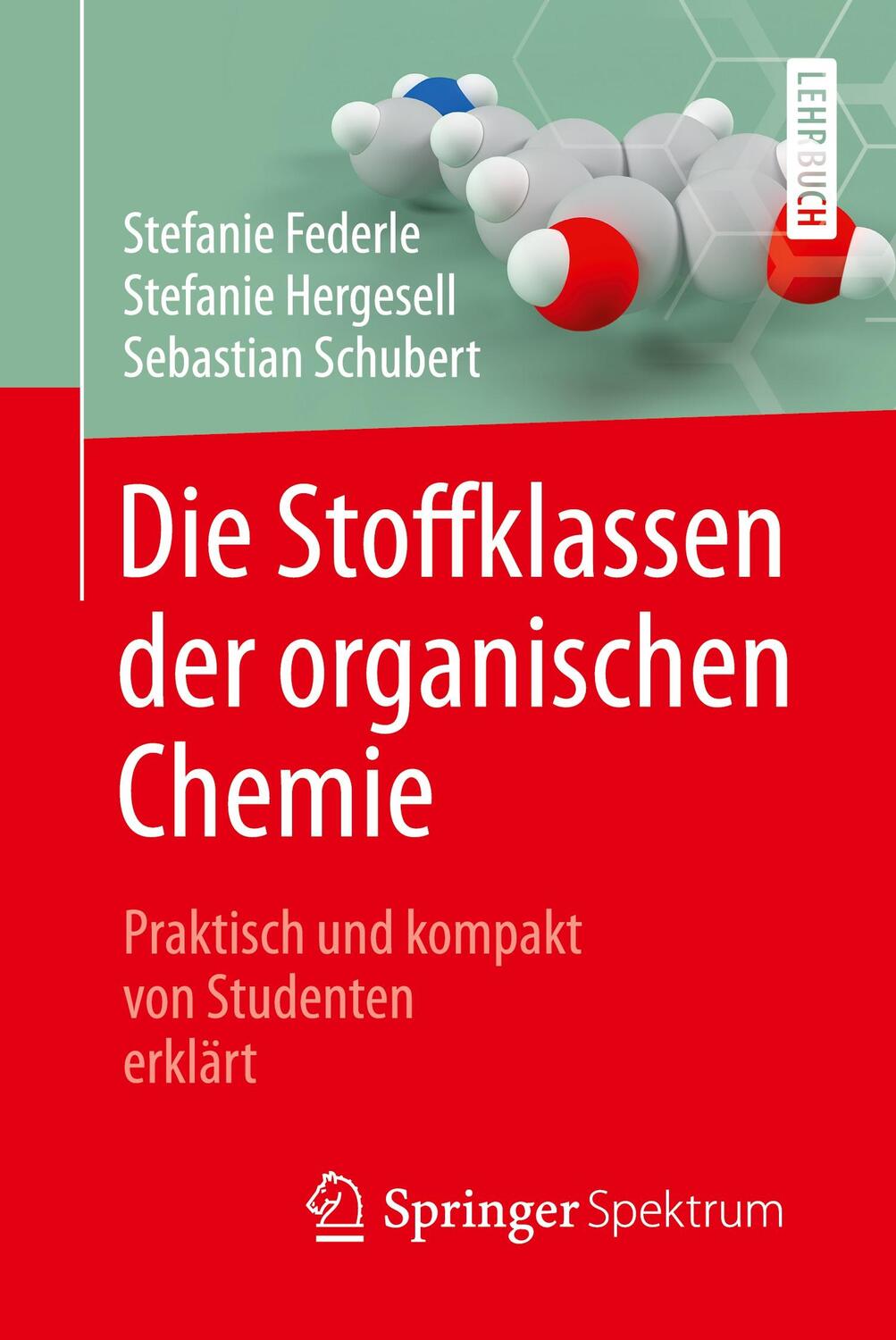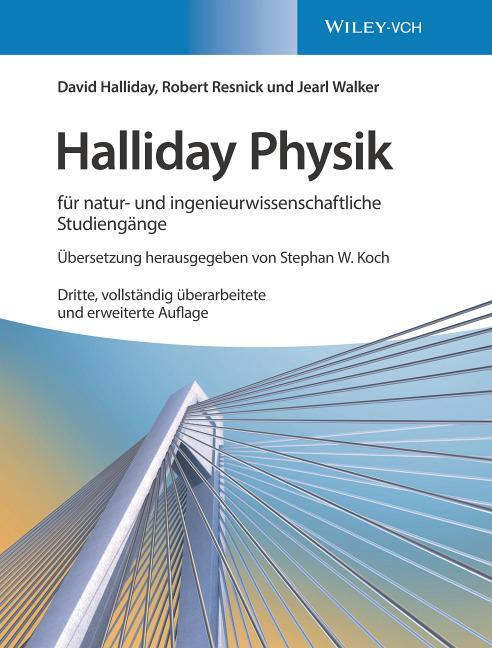Dekorationsartikel gehören nicht zum Leistungsumfang.
Sprache:
Englisch
48,95 €*
Versandkostenfrei per Post / DHL
Lieferzeit 2-3 Wochen
Kategorien:
Beschreibung
Hervorragend für Studienanfänger geeignet, wartet dieses Lehrbuch mit gut aufbereitetem Lernstoff und zahlreichen Praxisbezügen aus den unterschiedlichsten Anwendungsbereichen der Photochemie auf. Dabei wird insbesondere der multidisziplinäre Charakter des Gebiets herausgestellt.
Hervorragend für Studienanfänger geeignet, wartet dieses Lehrbuch mit gut aufbereitetem Lernstoff und zahlreichen Praxisbezügen aus den unterschiedlichsten Anwendungsbereichen der Photochemie auf. Dabei wird insbesondere der multidisziplinäre Charakter des Gebiets herausgestellt.
Inhaltsverzeichnis
Preface xiii
1 Introductory Concepts 1
Aims and Objectives 1
1.1 The Quantum Nature of Matter and Light 2
1.2 Modelling Atoms: Atomic Orbitals 6
1.3 Modelling Molecules: Molecular Orbitals 9
1.4 Modelling Molecules: Electronic States 13
1.5 Light Sources Used in Photochemistry 16
1.6 Efficiency of Photochemical Processes: Quantum Yield 25
2 Light Absorption and Electronically-excited States 29
Aims and Objectives 29
2.1 Introduction 29
2.2 The Beer-Lambert Law 30
2.3 The Physical Basis of Light Absorption by Molecules 32
2.4 Absorption of Light by Organic Molecules 35
2.5 Linearly-conjugated Molecules 39
2.6 Some Selection Rules 42
2.7 Absorption of Light by Inorganic Complexes 43
3 The Physical Deactivation of Excited States 47
Aims and Objectives 47
3.1 Introduction 47
3.2 Jablonski Diagrams 49
3.3 Excited-state Lifetimes 53
4 Radiative Processes of Excited States 59
Aims and Objectives 59
4.1 Introduction 60
4.2 Fluorescence and Fluorescence Spectra 61
4.3 An Exception to Kasha's Rule 63
4.4 Fluorescence Quantum Yield 64
4.5 Factors Contributing to Fluorescence Behaviour 65
4.6 Molecular Fluorescence in Analytical Chemistry 67
4.7 Phosphorescence 70
4.8 Delayed Fluorescence 73
4.9 Lanthanide Luminescence 74
5 Intramolecular Radiationless Transitions of Excited States 77
Aims and Objectives 77
5.1 Introduction 77
5.2 The Energy Gap Law 79
5.3 The Franck-Condon Factor 79
5.4 Heavy Atom Effects on Intersystem Crossing 82
5.5 El-Sayed's Selection Rules for Intersystem Crosssing 83
6 Intermolecular Physical Processes of Excited States 87
Aims and Objectives 87
6.1 Quenching Processes 88
6.2 Excimers 90
6.3 Exciplexes 93
6.4 Intermolecular Electronic Energy Transfer 96
6.5 The Trivial or Radiative Mechanism of Energy Transfer 97
6.6 Long-range Dipole-Dipole (Coulombic) Energy Transfer 98
6.7 Short-range Electron-exchange Energy Transfer 105
6.8 Photoinduced Electron Transfer (PET) 110
7 Some Aspects of the Chemical Properties of Excited States 119
Aims and Objectives 119
7.1 The Pathway of Photochemical Reactions 120
7.2 Differences between Photochemical and Thermal Reactions 124
7.3 Photolysis 127
7.4 An Introduction to the Chemistry of Carbon-centred Radicals 133
7.5 Photochemistry of the Complexes and Organometallic Compounds of d-block Elements 135
8 The Photochemistry of Alkenes 145
Aims and Objectives 145
8.1 Excited States of Alkenes 146
8.2 Geometrical Isomerisation by Direct Irradiation of C=C Compounds 147
8.3 Photosensitised Geometrical Isomerisation of C=C Compounds 149
8.4 Concerted Photoreactions 151
8.5 Photocycloaddition Reactions 157
8.6 Photoaddition Reactions 159
9 The Photochemistry of Carbonyl Compounds 161
Aims and Objectives 161
9.1 Excited States of Carbonyl Compounds 162
9.2 -cleavage Reactions 163
9.3 Intermolecular Hydrogen-abstraction Reactions 166
9.4 Intramolecular Hydrogen-abstraction Reactions 167
9.5 Photocyloaddition Reactions 168
9.6 The Role of Carbonyl Compounds in Polymer Chemistry 169
10 Investigating Some Aspects of Photochemical Reaction Mechanisms 173
Aims and Objectives 173
10.1 Introduction 174
10.2 Information from Electronic Spectra 174
10.3 Triplet-quenching Studies 176
10.4 Sensitisation 180
10.5 Flash Photolysis Studies 182
10.6 Low-temperature Studies 195
Further Reading 196
11 Semiconductor Photochemistry 197
Aims and Objectives 197
11.1 Introduction to Semiconductor Photochemistry 198
11.2 Solar-energy Conversion by Photovoltaic Cells 199
11.3 Semiconductors as Sensitisers for Water Splitting 204
11.4 Semiconductor Photocatalysis 208
11.5 Semiconductor-photoinduced Superhydrophilicity 211
Further Reading 212
12 An Introduction to Supramolecular Photochemistry 213
Aims and Objectives 213
12.1 Some Basic Id
1 Introductory Concepts 1
Aims and Objectives 1
1.1 The Quantum Nature of Matter and Light 2
1.2 Modelling Atoms: Atomic Orbitals 6
1.3 Modelling Molecules: Molecular Orbitals 9
1.4 Modelling Molecules: Electronic States 13
1.5 Light Sources Used in Photochemistry 16
1.6 Efficiency of Photochemical Processes: Quantum Yield 25
2 Light Absorption and Electronically-excited States 29
Aims and Objectives 29
2.1 Introduction 29
2.2 The Beer-Lambert Law 30
2.3 The Physical Basis of Light Absorption by Molecules 32
2.4 Absorption of Light by Organic Molecules 35
2.5 Linearly-conjugated Molecules 39
2.6 Some Selection Rules 42
2.7 Absorption of Light by Inorganic Complexes 43
3 The Physical Deactivation of Excited States 47
Aims and Objectives 47
3.1 Introduction 47
3.2 Jablonski Diagrams 49
3.3 Excited-state Lifetimes 53
4 Radiative Processes of Excited States 59
Aims and Objectives 59
4.1 Introduction 60
4.2 Fluorescence and Fluorescence Spectra 61
4.3 An Exception to Kasha's Rule 63
4.4 Fluorescence Quantum Yield 64
4.5 Factors Contributing to Fluorescence Behaviour 65
4.6 Molecular Fluorescence in Analytical Chemistry 67
4.7 Phosphorescence 70
4.8 Delayed Fluorescence 73
4.9 Lanthanide Luminescence 74
5 Intramolecular Radiationless Transitions of Excited States 77
Aims and Objectives 77
5.1 Introduction 77
5.2 The Energy Gap Law 79
5.3 The Franck-Condon Factor 79
5.4 Heavy Atom Effects on Intersystem Crossing 82
5.5 El-Sayed's Selection Rules for Intersystem Crosssing 83
6 Intermolecular Physical Processes of Excited States 87
Aims and Objectives 87
6.1 Quenching Processes 88
6.2 Excimers 90
6.3 Exciplexes 93
6.4 Intermolecular Electronic Energy Transfer 96
6.5 The Trivial or Radiative Mechanism of Energy Transfer 97
6.6 Long-range Dipole-Dipole (Coulombic) Energy Transfer 98
6.7 Short-range Electron-exchange Energy Transfer 105
6.8 Photoinduced Electron Transfer (PET) 110
7 Some Aspects of the Chemical Properties of Excited States 119
Aims and Objectives 119
7.1 The Pathway of Photochemical Reactions 120
7.2 Differences between Photochemical and Thermal Reactions 124
7.3 Photolysis 127
7.4 An Introduction to the Chemistry of Carbon-centred Radicals 133
7.5 Photochemistry of the Complexes and Organometallic Compounds of d-block Elements 135
8 The Photochemistry of Alkenes 145
Aims and Objectives 145
8.1 Excited States of Alkenes 146
8.2 Geometrical Isomerisation by Direct Irradiation of C=C Compounds 147
8.3 Photosensitised Geometrical Isomerisation of C=C Compounds 149
8.4 Concerted Photoreactions 151
8.5 Photocycloaddition Reactions 157
8.6 Photoaddition Reactions 159
9 The Photochemistry of Carbonyl Compounds 161
Aims and Objectives 161
9.1 Excited States of Carbonyl Compounds 162
9.2 -cleavage Reactions 163
9.3 Intermolecular Hydrogen-abstraction Reactions 166
9.4 Intramolecular Hydrogen-abstraction Reactions 167
9.5 Photocyloaddition Reactions 168
9.6 The Role of Carbonyl Compounds in Polymer Chemistry 169
10 Investigating Some Aspects of Photochemical Reaction Mechanisms 173
Aims and Objectives 173
10.1 Introduction 174
10.2 Information from Electronic Spectra 174
10.3 Triplet-quenching Studies 176
10.4 Sensitisation 180
10.5 Flash Photolysis Studies 182
10.6 Low-temperature Studies 195
Further Reading 196
11 Semiconductor Photochemistry 197
Aims and Objectives 197
11.1 Introduction to Semiconductor Photochemistry 198
11.2 Solar-energy Conversion by Photovoltaic Cells 199
11.3 Semiconductors as Sensitisers for Water Splitting 204
11.4 Semiconductor Photocatalysis 208
11.5 Semiconductor-photoinduced Superhydrophilicity 211
Further Reading 212
12 An Introduction to Supramolecular Photochemistry 213
Aims and Objectives 213
12.1 Some Basic Id
Details
| Erscheinungsjahr: | 2009 |
|---|---|
| Fachbereich: | Physikalische Chemie |
| Genre: | Chemie |
| Rubrik: | Naturwissenschaften & Technik |
| Medium: | Taschenbuch |
| Seiten: | 320 |
| Inhalt: | 250 S. |
| ISBN-13: | 9780470014943 |
| ISBN-10: | 0470014946 |
| Sprache: | Englisch |
| Herstellernummer: | 14501494000 |
| Autor: | Wardle, Brian |
| Auflage: | 1. Auflage |
| Hersteller: |
Wiley
Wiley-VCH |
| Maße: | 225 x 162 x 14 mm |
| Von/Mit: | Brian Wardle |
| Erscheinungsdatum: | 11.12.2009 |
| Gewicht: | 0,39 kg |
Inhaltsverzeichnis
Preface xiii
1 Introductory Concepts 1
Aims and Objectives 1
1.1 The Quantum Nature of Matter and Light 2
1.2 Modelling Atoms: Atomic Orbitals 6
1.3 Modelling Molecules: Molecular Orbitals 9
1.4 Modelling Molecules: Electronic States 13
1.5 Light Sources Used in Photochemistry 16
1.6 Efficiency of Photochemical Processes: Quantum Yield 25
2 Light Absorption and Electronically-excited States 29
Aims and Objectives 29
2.1 Introduction 29
2.2 The Beer-Lambert Law 30
2.3 The Physical Basis of Light Absorption by Molecules 32
2.4 Absorption of Light by Organic Molecules 35
2.5 Linearly-conjugated Molecules 39
2.6 Some Selection Rules 42
2.7 Absorption of Light by Inorganic Complexes 43
3 The Physical Deactivation of Excited States 47
Aims and Objectives 47
3.1 Introduction 47
3.2 Jablonski Diagrams 49
3.3 Excited-state Lifetimes 53
4 Radiative Processes of Excited States 59
Aims and Objectives 59
4.1 Introduction 60
4.2 Fluorescence and Fluorescence Spectra 61
4.3 An Exception to Kasha's Rule 63
4.4 Fluorescence Quantum Yield 64
4.5 Factors Contributing to Fluorescence Behaviour 65
4.6 Molecular Fluorescence in Analytical Chemistry 67
4.7 Phosphorescence 70
4.8 Delayed Fluorescence 73
4.9 Lanthanide Luminescence 74
5 Intramolecular Radiationless Transitions of Excited States 77
Aims and Objectives 77
5.1 Introduction 77
5.2 The Energy Gap Law 79
5.3 The Franck-Condon Factor 79
5.4 Heavy Atom Effects on Intersystem Crossing 82
5.5 El-Sayed's Selection Rules for Intersystem Crosssing 83
6 Intermolecular Physical Processes of Excited States 87
Aims and Objectives 87
6.1 Quenching Processes 88
6.2 Excimers 90
6.3 Exciplexes 93
6.4 Intermolecular Electronic Energy Transfer 96
6.5 The Trivial or Radiative Mechanism of Energy Transfer 97
6.6 Long-range Dipole-Dipole (Coulombic) Energy Transfer 98
6.7 Short-range Electron-exchange Energy Transfer 105
6.8 Photoinduced Electron Transfer (PET) 110
7 Some Aspects of the Chemical Properties of Excited States 119
Aims and Objectives 119
7.1 The Pathway of Photochemical Reactions 120
7.2 Differences between Photochemical and Thermal Reactions 124
7.3 Photolysis 127
7.4 An Introduction to the Chemistry of Carbon-centred Radicals 133
7.5 Photochemistry of the Complexes and Organometallic Compounds of d-block Elements 135
8 The Photochemistry of Alkenes 145
Aims and Objectives 145
8.1 Excited States of Alkenes 146
8.2 Geometrical Isomerisation by Direct Irradiation of C=C Compounds 147
8.3 Photosensitised Geometrical Isomerisation of C=C Compounds 149
8.4 Concerted Photoreactions 151
8.5 Photocycloaddition Reactions 157
8.6 Photoaddition Reactions 159
9 The Photochemistry of Carbonyl Compounds 161
Aims and Objectives 161
9.1 Excited States of Carbonyl Compounds 162
9.2 -cleavage Reactions 163
9.3 Intermolecular Hydrogen-abstraction Reactions 166
9.4 Intramolecular Hydrogen-abstraction Reactions 167
9.5 Photocyloaddition Reactions 168
9.6 The Role of Carbonyl Compounds in Polymer Chemistry 169
10 Investigating Some Aspects of Photochemical Reaction Mechanisms 173
Aims and Objectives 173
10.1 Introduction 174
10.2 Information from Electronic Spectra 174
10.3 Triplet-quenching Studies 176
10.4 Sensitisation 180
10.5 Flash Photolysis Studies 182
10.6 Low-temperature Studies 195
Further Reading 196
11 Semiconductor Photochemistry 197
Aims and Objectives 197
11.1 Introduction to Semiconductor Photochemistry 198
11.2 Solar-energy Conversion by Photovoltaic Cells 199
11.3 Semiconductors as Sensitisers for Water Splitting 204
11.4 Semiconductor Photocatalysis 208
11.5 Semiconductor-photoinduced Superhydrophilicity 211
Further Reading 212
12 An Introduction to Supramolecular Photochemistry 213
Aims and Objectives 213
12.1 Some Basic Id
1 Introductory Concepts 1
Aims and Objectives 1
1.1 The Quantum Nature of Matter and Light 2
1.2 Modelling Atoms: Atomic Orbitals 6
1.3 Modelling Molecules: Molecular Orbitals 9
1.4 Modelling Molecules: Electronic States 13
1.5 Light Sources Used in Photochemistry 16
1.6 Efficiency of Photochemical Processes: Quantum Yield 25
2 Light Absorption and Electronically-excited States 29
Aims and Objectives 29
2.1 Introduction 29
2.2 The Beer-Lambert Law 30
2.3 The Physical Basis of Light Absorption by Molecules 32
2.4 Absorption of Light by Organic Molecules 35
2.5 Linearly-conjugated Molecules 39
2.6 Some Selection Rules 42
2.7 Absorption of Light by Inorganic Complexes 43
3 The Physical Deactivation of Excited States 47
Aims and Objectives 47
3.1 Introduction 47
3.2 Jablonski Diagrams 49
3.3 Excited-state Lifetimes 53
4 Radiative Processes of Excited States 59
Aims and Objectives 59
4.1 Introduction 60
4.2 Fluorescence and Fluorescence Spectra 61
4.3 An Exception to Kasha's Rule 63
4.4 Fluorescence Quantum Yield 64
4.5 Factors Contributing to Fluorescence Behaviour 65
4.6 Molecular Fluorescence in Analytical Chemistry 67
4.7 Phosphorescence 70
4.8 Delayed Fluorescence 73
4.9 Lanthanide Luminescence 74
5 Intramolecular Radiationless Transitions of Excited States 77
Aims and Objectives 77
5.1 Introduction 77
5.2 The Energy Gap Law 79
5.3 The Franck-Condon Factor 79
5.4 Heavy Atom Effects on Intersystem Crossing 82
5.5 El-Sayed's Selection Rules for Intersystem Crosssing 83
6 Intermolecular Physical Processes of Excited States 87
Aims and Objectives 87
6.1 Quenching Processes 88
6.2 Excimers 90
6.3 Exciplexes 93
6.4 Intermolecular Electronic Energy Transfer 96
6.5 The Trivial or Radiative Mechanism of Energy Transfer 97
6.6 Long-range Dipole-Dipole (Coulombic) Energy Transfer 98
6.7 Short-range Electron-exchange Energy Transfer 105
6.8 Photoinduced Electron Transfer (PET) 110
7 Some Aspects of the Chemical Properties of Excited States 119
Aims and Objectives 119
7.1 The Pathway of Photochemical Reactions 120
7.2 Differences between Photochemical and Thermal Reactions 124
7.3 Photolysis 127
7.4 An Introduction to the Chemistry of Carbon-centred Radicals 133
7.5 Photochemistry of the Complexes and Organometallic Compounds of d-block Elements 135
8 The Photochemistry of Alkenes 145
Aims and Objectives 145
8.1 Excited States of Alkenes 146
8.2 Geometrical Isomerisation by Direct Irradiation of C=C Compounds 147
8.3 Photosensitised Geometrical Isomerisation of C=C Compounds 149
8.4 Concerted Photoreactions 151
8.5 Photocycloaddition Reactions 157
8.6 Photoaddition Reactions 159
9 The Photochemistry of Carbonyl Compounds 161
Aims and Objectives 161
9.1 Excited States of Carbonyl Compounds 162
9.2 -cleavage Reactions 163
9.3 Intermolecular Hydrogen-abstraction Reactions 166
9.4 Intramolecular Hydrogen-abstraction Reactions 167
9.5 Photocyloaddition Reactions 168
9.6 The Role of Carbonyl Compounds in Polymer Chemistry 169
10 Investigating Some Aspects of Photochemical Reaction Mechanisms 173
Aims and Objectives 173
10.1 Introduction 174
10.2 Information from Electronic Spectra 174
10.3 Triplet-quenching Studies 176
10.4 Sensitisation 180
10.5 Flash Photolysis Studies 182
10.6 Low-temperature Studies 195
Further Reading 196
11 Semiconductor Photochemistry 197
Aims and Objectives 197
11.1 Introduction to Semiconductor Photochemistry 198
11.2 Solar-energy Conversion by Photovoltaic Cells 199
11.3 Semiconductors as Sensitisers for Water Splitting 204
11.4 Semiconductor Photocatalysis 208
11.5 Semiconductor-photoinduced Superhydrophilicity 211
Further Reading 212
12 An Introduction to Supramolecular Photochemistry 213
Aims and Objectives 213
12.1 Some Basic Id
Details
| Erscheinungsjahr: | 2009 |
|---|---|
| Fachbereich: | Physikalische Chemie |
| Genre: | Chemie |
| Rubrik: | Naturwissenschaften & Technik |
| Medium: | Taschenbuch |
| Seiten: | 320 |
| Inhalt: | 250 S. |
| ISBN-13: | 9780470014943 |
| ISBN-10: | 0470014946 |
| Sprache: | Englisch |
| Herstellernummer: | 14501494000 |
| Autor: | Wardle, Brian |
| Auflage: | 1. Auflage |
| Hersteller: |
Wiley
Wiley-VCH |
| Maße: | 225 x 162 x 14 mm |
| Von/Mit: | Brian Wardle |
| Erscheinungsdatum: | 11.12.2009 |
| Gewicht: | 0,39 kg |
Warnhinweis

